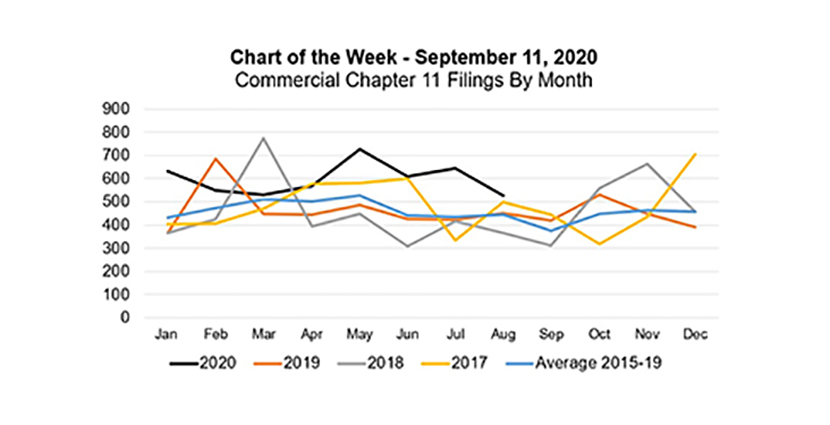
MBA Chart of the Week: Commercial Chapter 11 Filings By Month


The onset of the COVID-19 pandemic, and subsequent business closures that occurred in the months following, resulted in a rapid rise in commercial Chapter 11 bankruptcies, as some businesses were not able to reopen – or reopen at sufficient capacity to survive.
There were 528 bankruptcy filings in February 2020, and an additional increase of over 200 filings to 725 in May. The year to date total in 2020 is about 28 percent higher than the same period in 2019. Even as states reopen, many businesses have been restricted in their scale of operations, especially at dining and entertainment venues.
While this week’s MBA Chart of the Week shows months of similar or even higher spikes in recent years, these new 2020 bankruptcy filings come at a time where the public health picture is far from clear, the unemployment rate is elevated, and there has been an increasing trend in the number of permanent layoffs. The unemployment rate averaged around 4 percent between 2017 and 2019, compared to a high of 14.7 percent in April 2020, and 8.4 percent in August. From 2017 to 2019, the average number of permanent job losses per month dropped from 1.8 million to 1.3 million.
Starting in March 2020, there were increases in five out of six months, including a 534,000 increase in August to reach 3.4 million for the month. The economic hit the U.S. experienced was severe and concentrated in a few sectors of the economy. Looking ahead, the economy will require not only time to rebuild, but also adaptations to operations in a post-pandemic environment.
While there have been numerous data points showing encouraging signs of an economic recovery from the dramatic and steep downturn we experienced in the second quarter, the rate and the extent of this recovery, and the health of household finances, will hinge on the rehiring of the workers who have lost their jobs, both permanently and temporarily. Much of this rehiring will greatly depend on if – and when – surviving businesses can hire them. Moreover, the health of the business sector will certainly impact demand for both retail and office space, therefore these trends bear close watching for both MBA’s residential and commercial/multifamily members.
– Joel Kan (jkan@mba.org), Eddie Seiler (eseiler@mba.org)
